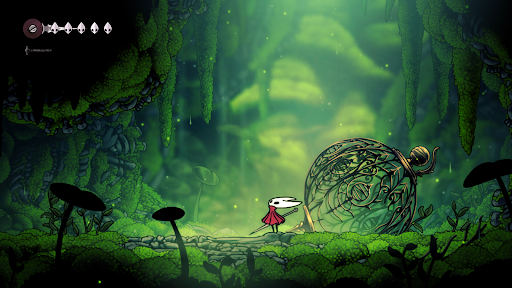This article will contain major spoilers for Acts 1 and 2, and the normal ending, of Hollow Knight: Silksong.
The idea seems odd, if not completely insane. A 21st century video game about a bug, not only referencing, but heavily utilizing a Gregorian chant from the 16th century?! But it’s true; truer than you’d think. Hints of the chant can be found throughout the soundtrack, building up the mood and themes of the story. And by the end of this article, you’ll be shocked with just how prevalent this ancient chant is.
Firstly, let’s establish why an ancient chant even belongs in a modern video game. “Dies irae”, or “Day of Wrath”, is a chant which can be traced back to the 16th century, though it may be even older than that. The ‘Day of Wrath’ in question is the biblical apocalypse. The chant is a dark, serious piece that any ear can immediately discern as “doom and gloom”. So why was this song used in Hollow Knight: Silksong? Was the composer just being lazy? No! In fact, Christopher Larkin, the composer for Silksong, was using a composition technique known as “leitmotif”. This technique uses short segments of music to represent a certain idea or theme. In this example, the first four notes of the “dies irae” chant are used to represent doom or death.
How can I say this for sure? Let’s look at how the leitmotif is used throughout the game. The leitmotif is first heard immediately upon booting up the game. It is literally the very first notes of the title screen music. Clearly, this leitmotif holds significance in the game. The theme appears throughout the game, with each separate instance having its own meaning. Let’s look at two particular usages to get an idea of how leitmotif is used.
A short while into the game, the theme is heard being hummed, a bit higher than its classic pitch, by a character named “Lace”, a “maniac fencer who delights in battle”. She is one of the first sentient combatants Hornet (the main character of the game) meets, and her obsession with combat, to the level of what appears to be lunacy, is clear. So in this case, Lace joyfully humming a theme associated with death gives us a clear idea of her character. Towards the end of the game, however, the game creates a shocking diversion of expectations regarding Lace and the Dies Irae. Lace is revealed to be the child of the final boss, and true overarching antagonist of the game, Grand Mother Silk. When Hornet awakens Grand Mother Silk from her slumber, the moment she appears on the screen, the Dies Irae blasts in full, powerful fashion. Her battle theme is made almost entirely of the Dies Irae, more so than any other occasion in the game. And as the payoff to the setup when we first met Lace, Grand Mother Silk uses the Dies Irae a little bit higher pitched than normal. In fact, it is the exact same pitch as Lace was humming at the beginning of the game. The shocking realization is that Lace’s humming was not simply a reflection of her own personality, but also of her relationship with Grand Mother Silk. Lace has been living her entire life despising her mother, her ‘maniac’ personality nothing more than a coping mechanism derived from the supposedly meaningless state of her existence her mother gave to her when she created Lace as a sort of sentient silk-automata. This completely changes the meaning of the earlier humming, lining up with how the player’s view of Lace as a character has completely changed.
And this is just one way that leitmotif can beautifully line up with story to create a masterpiece. This can be seen in tons of other examples as well, from Star Wars to Squid Game, which both also use the Dies Irae to convey powerful themes. Many other games, movies, TV shows, and plays use leitmotif to weave masterful tales of complex characters, relationships, and ideas that leave the audience thinking for a great while after the story has ended. In a way, any masterpiece is made not just by one piece, but by a great deal of them lining up like a well-crafted jigsaw puzzle to leave the viewer’s mouth agape when the pieces finally snap together.
Image courtesy of Team Cherry.
